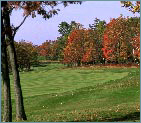
Many of the changes occurring on the golf course stem from a summit meeting of sorts that took place at Pebble Beach, Calif., in the mid-1990s between golf organizations and environmental groups. A set of environmental principles was agreed to and over time real changes have begun to take hold.
Golf course superintendents, many equipped with master’s degrees in agronomy, have found innovative ways to steward the land and cut costs. At one club, the superintendent discovered that pest resistance soared when the grass was allowed to grow just one-eighth of an inch higher, allowing him to sharply reduce the use of pesticides. Another unusual approach to pest control came in the form of dozens of bat and bluebird houses placed around the course. And the same superintendent kept his ponds clear of algae by introducing carp rather than algicides.
Water use, a major expense for golf courses and a major sore point for environmentalists and sometimes communities, has been tackled on a number of fronts. Highly efficient irrigation systems have worked at some courses, while the installation of drought-tolerant native plants has cut water use elsewhere. At one club, the superintendent replaced the Kentucky blue grass on the fairways with creeping bent grass and cut his water bill in half.
Winning over golf course management, however, is only half the battle. Players also have had to change their expectations from the glowing green of a manicured monoculture to one that allows for a path lined by black-eyed Susans, a patch of tall grass where a family of foxes can hide, and the occasional brown spot or two.
As open space near urban centers becomes scarcer, golf courses are providing surprisingly good habitat for wildlife and reconnecting a lot of people with a bit of the natural world.
 The New York Times
The New York Times

